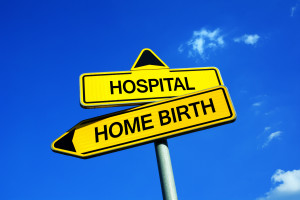At Home Birth: Is it the best plan for mom and baby?
 Whether the baby you’re carrying is your first or your fifth, you may be considering planning for an at home birth, a trend that is rapidly growing across the nation. While the comforts and privacy of home may sound appealing, before you arrange to give birth at home, you should familiarize yourself with the benefits and risks involved with this delivery strategy and then heavily consider what is truly best—and safest—for you and your growing family.
Whether the baby you’re carrying is your first or your fifth, you may be considering planning for an at home birth, a trend that is rapidly growing across the nation. While the comforts and privacy of home may sound appealing, before you arrange to give birth at home, you should familiarize yourself with the benefits and risks involved with this delivery strategy and then heavily consider what is truly best—and safest—for you and your growing family.
What Happens During an At Home Birth
During a planned home birth, a midwife will supervise your delivery. You may choose to have the attendance and support of anyone you’d like with you, from your baby’s dad to your entire extended family. Some women also elect to incorporate a warm water bath into their home delivery, which requires the temporary set up of a birthing pool. Women who choose an at home birth are typically not given prescription pain relief.
The Benefits of an At Home Birth
For centuries, at home births were the norm. (If you’ve ever watched Call of the Midwife, it’s amazing to see how mainstream at home births are!) At home births should only be considered for women with healthy, low-risk pregnancies. If you are considering an at home birth, here are a few benefits of this type of delivery plan:
- Most women are able to avoid an episiotomy, cesarean section, epidural and other similar interventions.
- You will be able to experience the birth of your new baby with family and friends.
- You are free to move around, change positions, take a shower, and eat or drink freely during labor.
- You are in the comfort of your own home.
- It costs less than a hospital birth.
What are the Risks of an At Home Birth?
Data shows that at home births increase a woman’s risk of a medical complication and ultimately the need for escalated medical intervention. More specifically, at home births pose a risk for:
- Necessitating a labor induction
- A cesarean section (C-section)
- A delivery that requires a vacuum extraction or the use of forceps
- Vaginal tears or lacerations
- Severe bleeding that requires a blood transfusion
- Infant seizures
- Infant nervous system disorders
- Infant death
The Potential for a Hospital Transfer
Your motivation to plan for an at home birth may surround the fact that you believe you will feel more comfortable at home, not surrounded by doctors, nurses, beeping machines, and a roommate who has dozens of visitors or likes to chat loudly on the phone. Understand, however, that at home births with complications may result in an emergency hospital transfer, which means you may ultimately end up in the hospital despite your desire to remain at home. A midwife may transfer you to a hospital if:
- Your labor is not progressing
- Your baby is not positioned head down
- Your baby is in distress
- You experience extreme pain or bleeding
- You have high blood pressure
Are There Cases When an At Home Birth is Not Recommended?
Yes. The American College of Obstetricians and Gynecologists cautions against an at home birth in cases of:
- Multiples
- A baby that is not positioned head-down
- You have had a previous C-section
- You are delivering earlier than 17 weeks or later than 41 weeks
- You have diabetes or high blood pressure or other high risk pregnancy conditions
If you have been hearing stories from women in your social circle or reading on social media about the perceived benefits of at home births, talk to your OBGYN. He or she can provide you with all of the information—including a thorough explanation of the benefits and risks—you need to know before you choose how you want to plan for your delivery. At our practice, we believe that a hospital birthing plan is best for mom and baby, but ultimately it is your decision.
More
